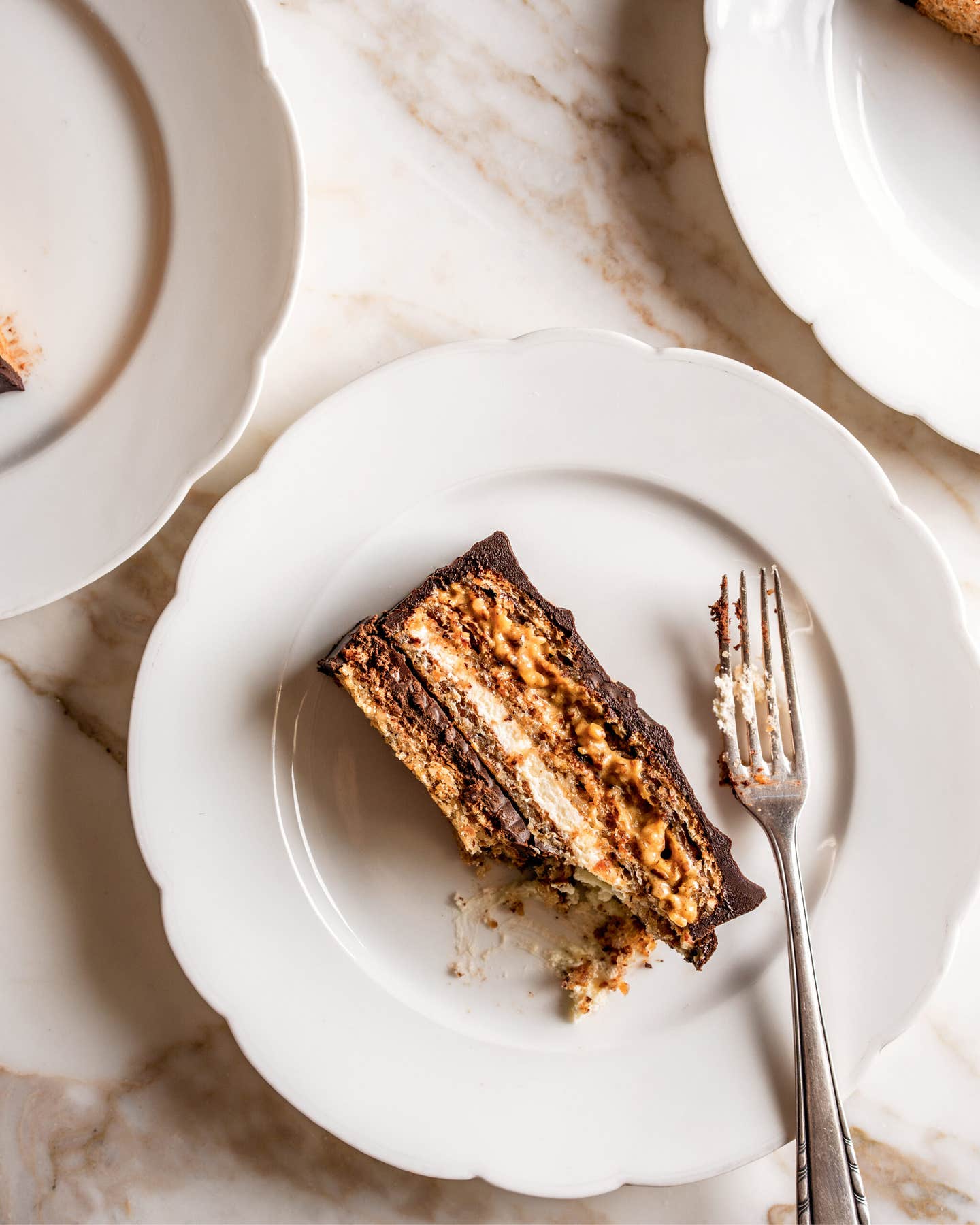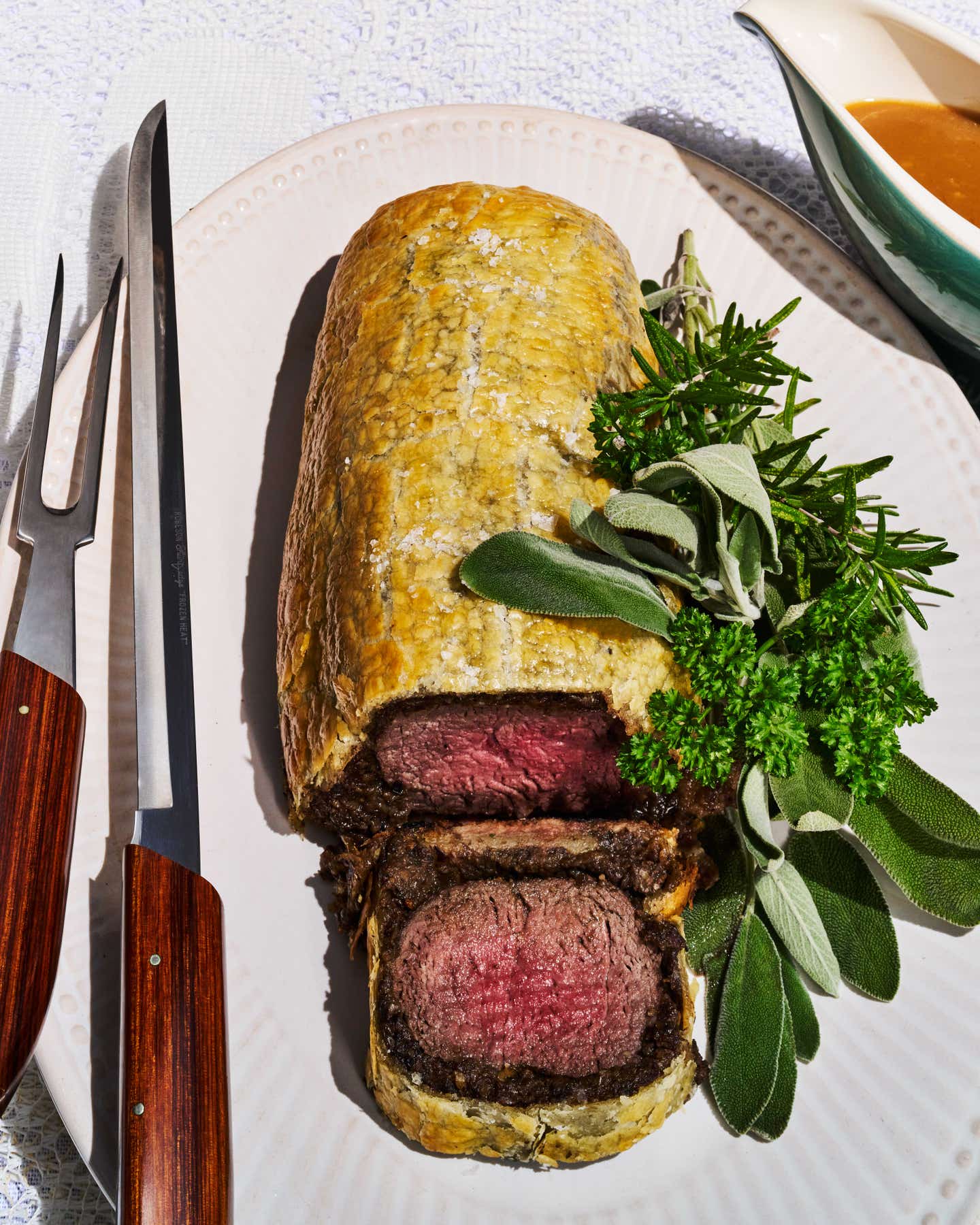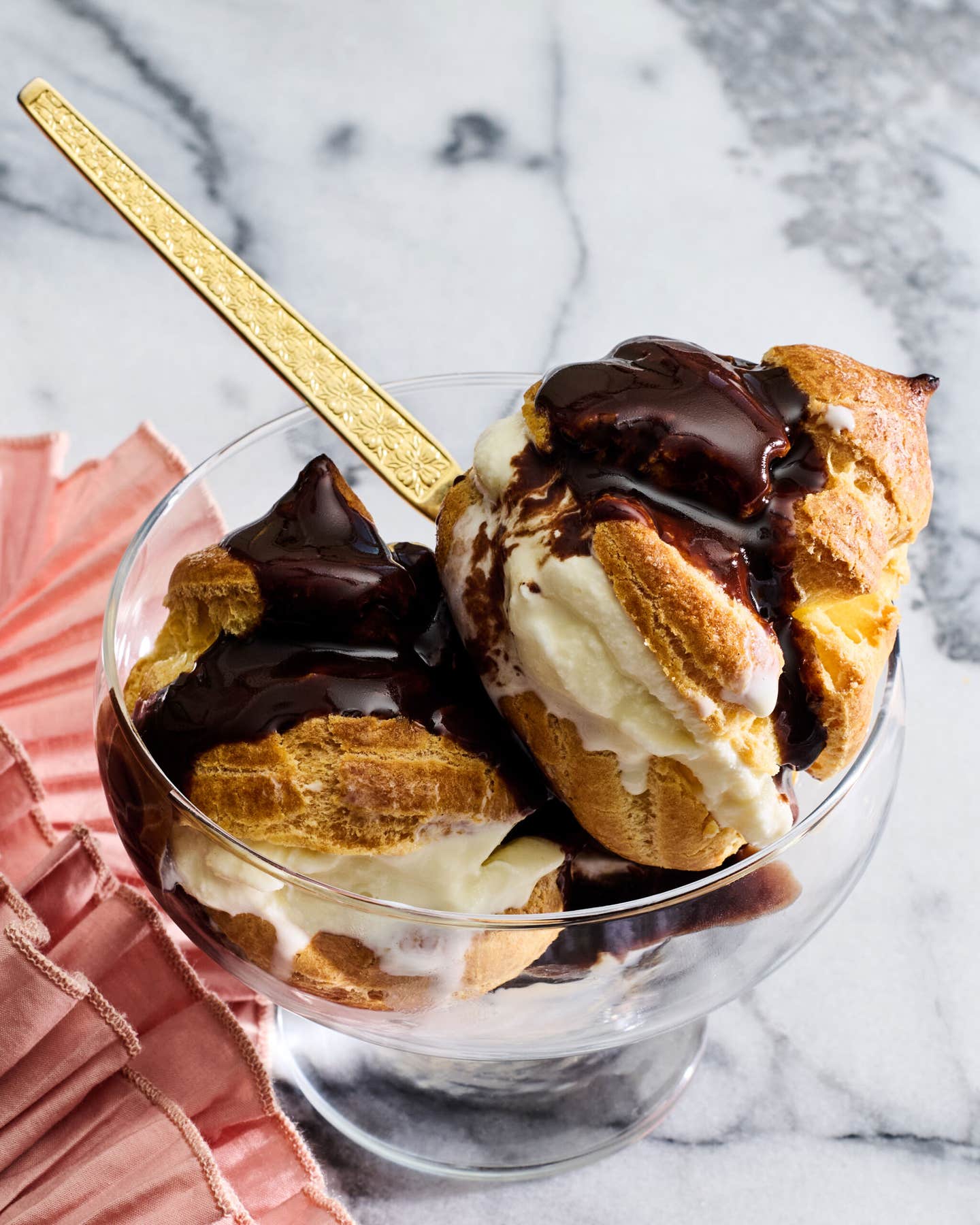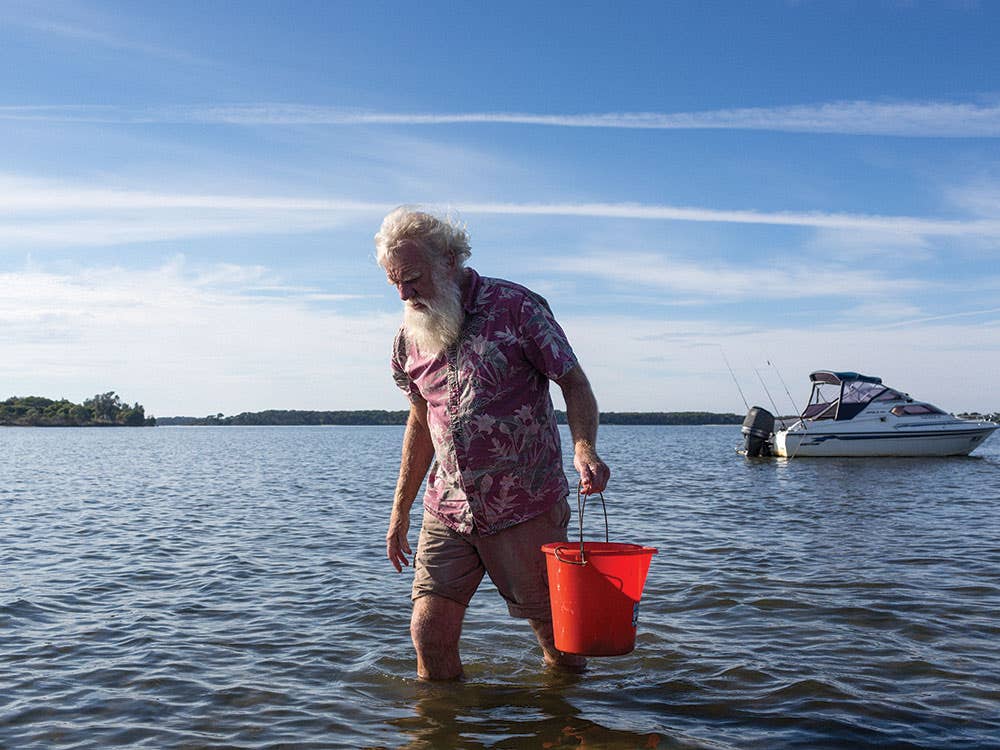
The Steward of Australia’s Original Food
By challenging myths about indigenous foodways, Bruce Pascoe helps Australians rediscover their true culinary heritage
Bruce Pascoe waded through the shallows at the mouth of Mallacoota Inlet, an estuary in southeastern Australia, on the Tasman Sea. He had a slight frown on his weathered face and a plastic bucket in hand as he lifted tree snags caught on sandbars.
“Not a one mussel left,” he said, climbing back onboard his runabout. “I can’t understand it. There were plenty last week.” Pascoe gunned the boat’s engine and headed for another bed. A lean man in his late 60s, he found more success after digging around with his bare toes, the tip of his long white beard damp as he bent in deeper water to grab up a dozen clams. He passed me the bucket and hauled up the anchor. I looked at the unfamiliar contents—like Pascoe, they were bearded and crusted in mud. “Blood cockles,” Pascoe said. “My people ate them when they were starving.”
Pascoe is descended from the Bunurong people of the Kulin nation, an alliance of indigenous groups that occupied south-central Victoria for some 40,000 years before European settlement in the early 19th century. A writer whose work is based on that legacy, Pascoe has lately turned to the subject of indigenous food. Australia has only recently come to recognize the debt owed to its First Peoples, after nearly two and a half centuries of abuses and land seizures. To Pascoe, food and agriculture are tied to acknowledging sovereignty, and may also create a pathway to reparation for an ages-old culture that thinks of land in metaphysical terms, not as mere real estate.
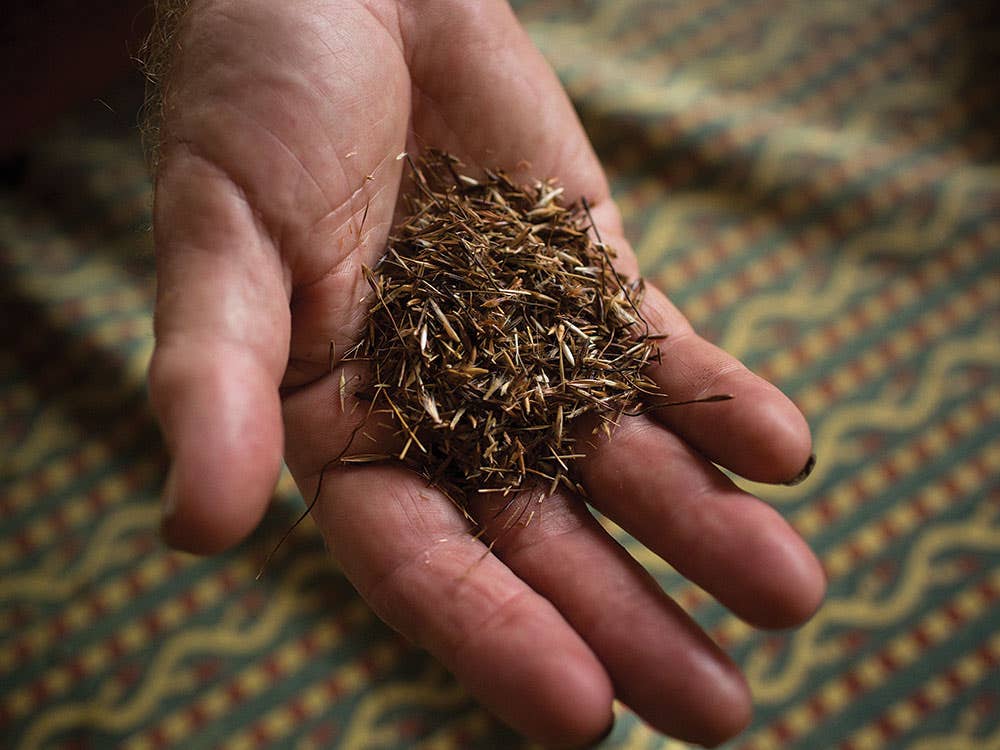
We cruised farther inland, where the waterway narrowed and turned brackish, cheerfully waving to fishermen casting for bream at the verge of a dense melaleuca forest. “That’s where we get clay for our initiation ceremonies,” he said, pointing to a curve on the riverbank where the soil turned from ochre to rust in hue. For aboriginal people of both sexes, this rite of passage occurs as they approach adulthood, when elders decide it’s time to pass on the mystical aspect of their language group and country. (Intricate body painting with clay is part of this tradition.) Pascoe told me he had helped initiate his own son Jack—a rare honor for both, because another elder belonging to the same clan usually takes on this responsibility rather than a parent.
A sea eagle circled overhead, hunting prey.
Pascoe was born in Richmond, a working-class suburb of Melbourne. As a younger man, he built farm fences, dove for abalone, worked as a bartender and rural schoolteacher. He crewed on a salmon fishing boat in Alaska and was a dog wrangler for a veterinary clinic in the Northern Territory. Now he is a professor in the educational support program for aboriginal students at the University of Technology Sydney. His 30-some books include novels, historical fiction, children's stories, and a work on aboriginal language. Dark Emu, one of Pascoe's most recent, refutes the widely accepted idea that precolonial inhabitants were primitive hunter-gatherers wandering the continent in search of sustenance. Rather than being haphazard foragers of witchetty grubs and such, aboriginal people, Pascoe argues, formed a highly sophisticated agricultural society with an ingrained, near-spiritual stewardship of the land. After the publication of Dark Emu, Pascoe took on yet another mission: building awareness of lost foodways through the rediscovery of native ingredients and an appreciation of the continent's first caretakers. "Our whole culture is about sharing," he said. "I know how important it's going to be for the country and for aboriginal people to be involved in the resurgence of old crops, but you can't eat our food if you can't swallow our history."

Pascoe now lives with his wife, Lyn Harwood, in Far East Gippsland, a rural corner of Victoria at the convergence of the Genoa and Wallagaraugh rivers, where cellphones are practically useless and the community newspaper, the Mallacoota Mouth, is stapled together by high school volunteers. It is one of Australia’s untamed landscapes, filled with alpine ranges, old-growth rain forests, coastal heathland, rare orchids, bushfire-scorched stands of eucalyptus that smell alkaline and resinous, and a vast network of rivers and lakes that empty into the Tasman Sea.
A pelican squatting on Pascoe’s dock ruffled its feathers in alarm at our arrival. “Don’t worry, brother,” Pascoe said. “We’ll be out of your way in no time.”
He transferred the cockles to a mesh bag and dunked them in the water to rinse them free of sand. As we headed toward his house, he pointed to lime-green succulents fringing the shoreline. I picked a handful. “That’s samphire,” he said. “It’s salt tolerant.” It tasted like juicer, saltier raw asparagus. In a shaded area next to his steep driveway, Pascoe stopped again, then kneeled to gather dense groundcover atop a compost pile. “We call this warrigal, but it’s also known as Cook’s cabbage,” he explained, offering me a cluster of spade-shaped leaves. “When James Cook landed in Australia, he fed this plant to his crew on the Endeavour. Without it, they would have died of scurvy.” Harwood uses the plant to make pesto with macadamia nuts from the orchard.
In Dark Emu, Pascoe describes the cultural practices of Australia's indigenous population as a kind of "jigsaw mutualism." Individuals served as temporal custodians of trees, rivers, pastures, and mountain ranges. Their conservancy of each piece of country was inevitably connected to those in the care of their neighbors. Astonishingly, this communal responsibility extended great distances, with an abiding trust that those elsewhere, in parts unknown, even with different dialects and totems, were upholding the same law of the land.
That balance changed drastically when colonial pastoralists introduced livestock to croplands that had been carefully tended for millennia. Yam daisy pastures in Victoria disappeared within a few years. Vast plains of kangaroo grass, once so abundant that those who harvested it were called the Grass People, turned to dust.
Later in the afternoon, Pascoe and his neighbor Denise Parker tackled his overgrown vegetable garden, patching fences and yanking out end-of-season tomato plants. “Did you hear about the fellow who was poaching mussels?” Parker asked, as she gathered unripe tomatoes in a burlap sack. “Caught trying to sell them up in Pambula, almost 50 pounds’ worth.”
“No wonder I couldn’t find any,” Pascoe said.
The pair were working to make space for native millet, Panicum decompositum, a staple grain of the aboriginal diet that is milled and baked in ashes into a cake. The seeds were delicate, tawny, attached to feathery pappi that aid wild dispersal by wind. Pascoe uprooted one of his yam daisies—the star-shaped dandelion-yellow flower and stalks were attached to a stubby tuber the size and color of a baby parsnip. “I’ll get a decent crop of these next year if I can keep the bush rats out,” he said.
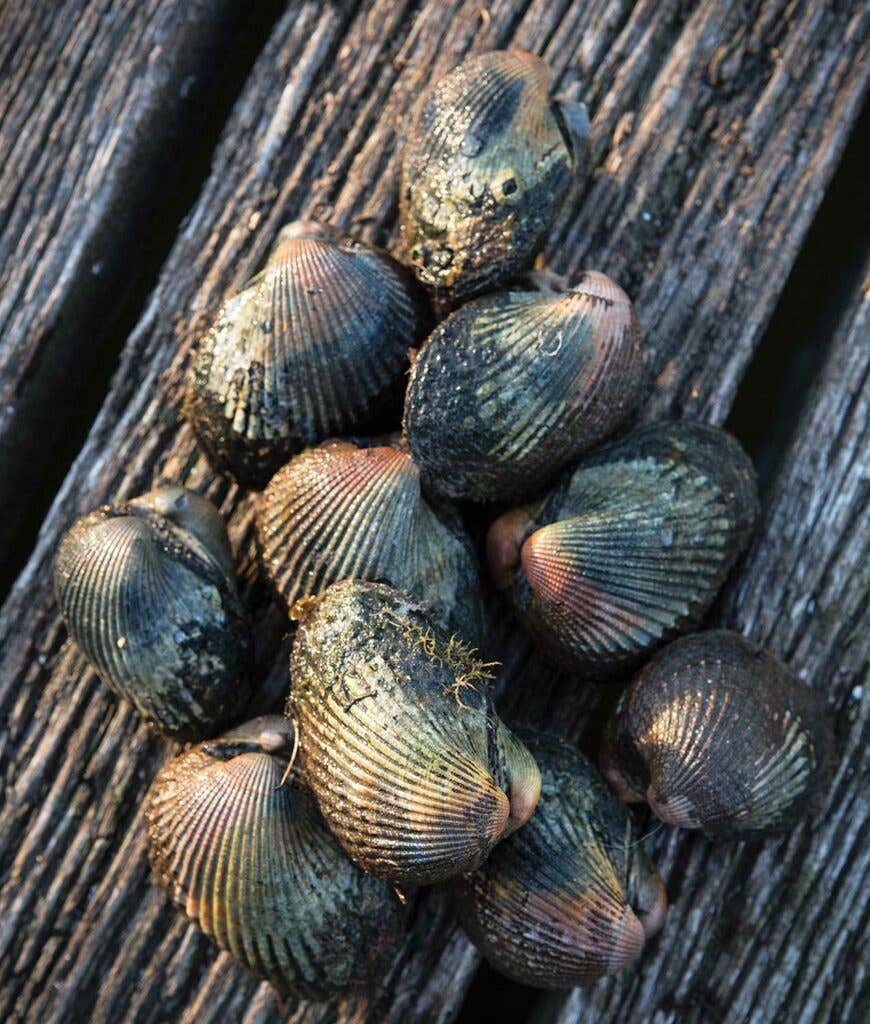
One of Pascoe’s current outreach projects involves a prison work scheme for young offenders willing to participate in the next harvest cycle. It’s hard work, and he could use the extra helping hands. I asked him if he regretted the detour from literature and history into food advocacy and he sighed, trowel in hand. “I resent the time,” he admitted. “But I really can’t let this opportunity go, because I can see so many possibilities for young people, of whatever color, to get involved in looking after the ground.”
Dark Emu was a bestseller and recipient of several prestigious literary awards, but it resonated most with Australia's leading chefs, including Ben Shewry of Melbourne's Attica and Dan Hunter of Brae, in Victoria. Thanks to Pascoe's writing and garden experiments, the yam daisy is about to join other native ingredients—wattleseed, saltbush, finger limes, quandong, lemon myrtle, muntries berries—finally finding their way into the mainstream Australian pantry. Shewry, who became a fishing buddy after reading Dark Emu, raised a test crop at his Ripponlea Estate kitchen garden this year on Pascoe's urging. He served me a yam daisy for lunch one day in Melbourne. Simmered in salted water, then fried until caramelized, the tiny tuber tasted sweet, almost like a white yam.
“Bruce’s legacy will be that he helped educate Australians on what their true ingredients are,” Shewry says. “Not the ones that the first settlers brought here. I’m talking the plants that belong here, the endemic species that have been here for more than 50,000 years and that aboriginal and Torres Strait Islander people have always known about, cared for, grown, and use as one of the most integral parts of their culture.”
Pascoe’s two blue heelers, Wangarabell and Yambulla, greeted us with joyful barking when we returned to his house. Harwood was proofing bread dough in the kitchen. She paints watercolors of songbirds and drives the Mallacoota fire truck, a red behemoth that barely fits on the narrow road into town. Both she and Pascoe are Country Fire Authority rural wardens. When we sat down to dinner, Harwood cut me generous slices of her spelt and kangaroo grass bread, still warm from the oven. It had a pleasant, herbaceous aroma.
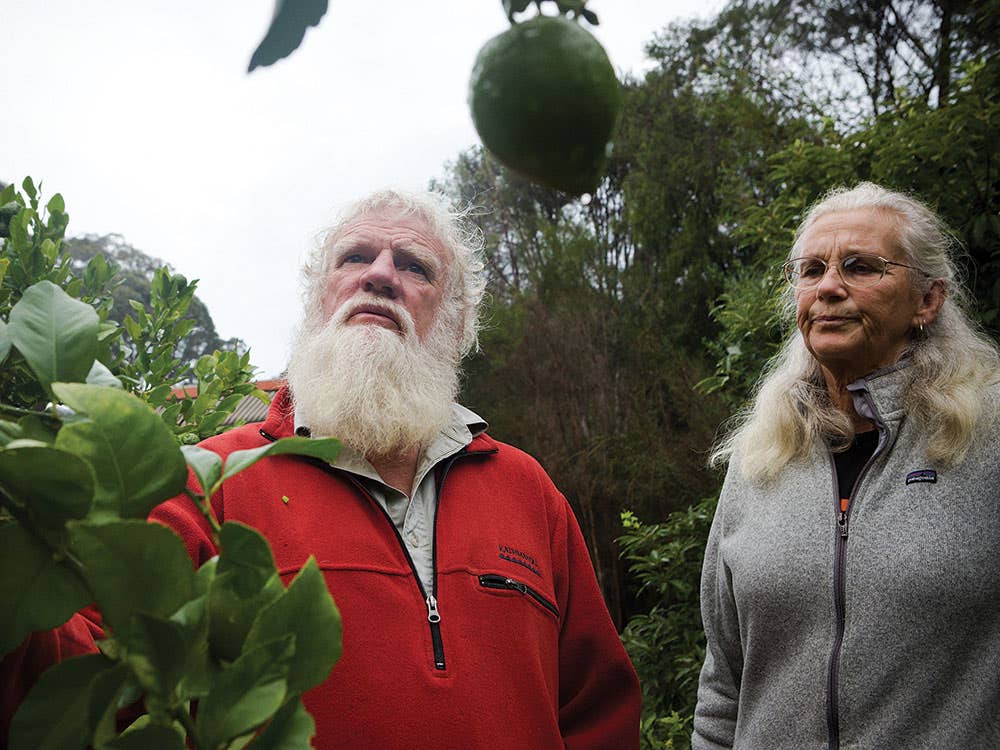
Prehistoric grinding stones excavated at a dig in New South Wales have led Australian archeologists to propose that native grasses were ground into flour almost 38,000 years ago. It’s the oldest evidence of bread baking in the world. Harwood used a simple tabletop hand-crank grain mill to grind the kangaroo grass that Pascoe discovered growing wild in an unfertilized field next to the local airstrip. She showed me how they snapped the stems from the reddish brown seeds, smaller and thinner than grains of wild rice. The amount of labor required—harvesting, winnowing, grinding—for a single cup of flour was daunting.
Reviving these lost traditions has not been easy. “Even if it means separating the seed by hand, we’ve just got to keep going until we can make a loaf of bread,” Pascoe said.
He cracked open a blood cockle and blanched it in a pan with a red wine vinegar reduction. Thanks to the high level of hemoglobin that gives this muscular bivalve its name, the blood cockle is about as unlovely to look at as it sounds. But I slurped, then chewed, and was surprised by the mild briny taste and a texture that reminded me of abalone. Harwood’s warrigal pesto on grilled chicken took less effort to appreciate. The puréed leaves were close in flavor to spinach. Cook’s crew apparently put up a fight when forced to eat this alien superfood. (Not every sailor is a natural Popeye.)
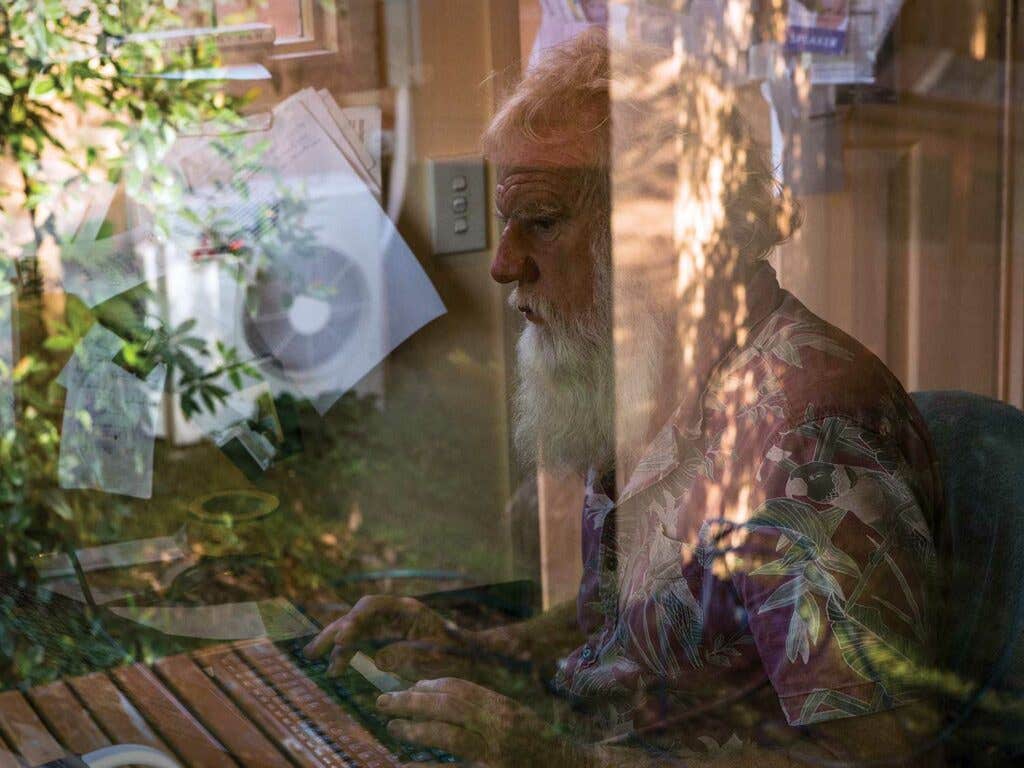
Harwood cleared the dishes while Pascoe tuned into National Indigenous Television to watch the Marngrook Footy Show. The dogs jumped up next to me for couch time, so I scratched Wangarabell’s dappled head as indigenous commentators rehashed the weekly Australian rules football matches. “My neighbors up here to the west, their totem is the blue wren, and the other totem is the emu wren, slightly smaller. And my friends put them on their football jumpers. How cute is that?” Pascoe said. “These big bold men running around in footy jumpers with tiny birds on them and feeling no shame because these creatures represent the power of the earth.”
I asked Pascoe to tell me what the “dark emu” represents. He beckoned me outside to look at the night sky, where we located the Southern Cross. As the constellation defined by dark nebulae came into focus, the distinct outline of a bird resting its head under the cross became clear in the negative space. He explained the myth of an emu totem spirit that left earth to reside in the Milky Way. The story varies in interpretation from group to group, but Pascoe said the bird is linked with the wide grasslands of Australia, because Aborigines used the seasonal movement of constellations to know when to harvest.
“Our people would always choose to sleep outside with a view of the sky if they could,” he said. “We were such great astronomers, because we knew the sky so well. Europeans stare at the stars, but aboriginal people also see the spaces between, where the dark emu resides.” Perhaps that’s how Pascoe knows to look at an overgrown field on the edge of an airstrip and see a loaf of bread in Australia’s past—and another in its future.
Keep Reading
Continue to Next Story


